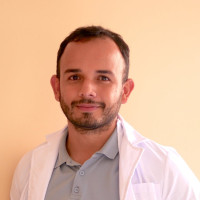Chronic & Non Communicable Diseases
Health Technologies
Medical Treatment & Drug Development
Biotech- and Nanotechnology
Skin & Tissues Related Diseases
AXA Chairs
Spain
2016.07.14
Finding a cure to the irreversible damages caused by spinal cord injuries
Building a bridge to restore communication in the spinal cord
Our brain communicates with the rest of our body through the spinal cord. When a lesion occurs, the nerve communication can be partially or entirely broken. The connection between the neuronal cells in the spinal cord is interrupted. « Basically, this means that our brain can no longer send messages to our body. » explains Prof. Prato. « What we are trying to do is to insert 3D constructs of CNTs into the lesioned part and see whether we can obtain reconnection ».
Carbon nanotubes have unique electrical, mechanical and chemical properties that make them interesting materials to use with electroactive cells, such as neurons. « Neuronal cells communicate among themselves with electricity. we were the first to shown that building a bridge made of conductor material between two separated pieces of spinal cord could reestablish the connection between them », describes Prof. Prato. Precisely how this works – whether the CNT acts as electrical wires through which neurons can communicate, or if it acts like an active structure which allows the nerve to grow around it –, has not yet been established.
To take this promising approach to the next level, the AXA-biomaGUNE Nanobiotechnology Chair will pursue complementary objectives. First, the researchers will test more exhaustively how CNTs interact with the spinal cord. Then, they will work on increasing the biocompatibility of CNTs, in particular by developing new synthetic materials that will help insert the nanotubes safely into a lesion site. Lastly, the team will test the most promising of these bio-hybrid 3D neural constructs in vivo.
Prof. Maurizio Prato insists the research process will take at least another 10 years before clinical trials can start. « We don’t yet want to give false hopes to patients and their families », he specifies. But his findings will, in time, provide significant new understanding of spinal cord injuries, leading to breakthrough advances in improving treatment. By means of innovative carbon nanomaterials scaffolds, the project’s ambitious aim is to make paralyzed people walk again. By supporting it through the endowment of the Chair, AXA wants to give every advantage to Prof. Prato and his host institution, the CIC biomaGUNE.

Maurizio
PRATO
Institution
Centre for Cooperative Research in Biomaterials
Country
Spain
Nationality
Italian
Related articles
Insects & Microorganisms
Medical Treatment & Drug Development
Terresterial Biodiversity
Agriculture, Crops & Soil Health
Biotech- and Nanotechnology
Vaccines
Post-Doctoral Fellowship
Argentina
Harmless and Eco-Friendly Solution as an Alternative to Replace Synthetic Agrochemicals
Agrochemicals were introduced to protect crops from pests and enhance crop yields. However, they have become a long-standing concern due... Read more

Johan
RODRIGUEZ MELO

